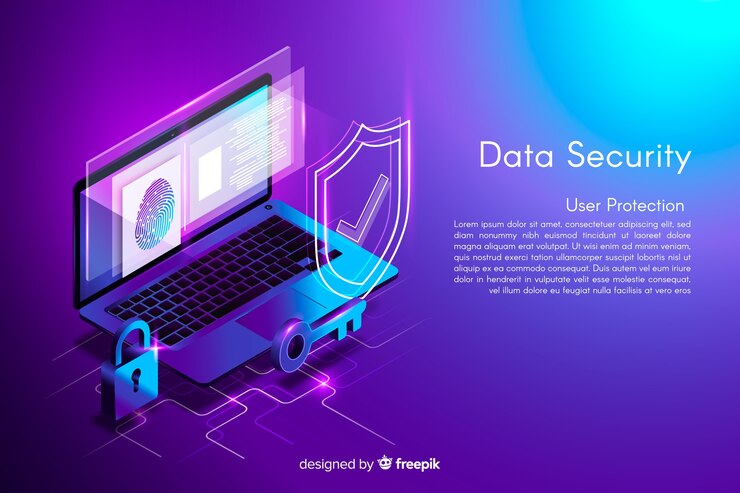Data security is essential for organizations today, serving as a defense against increasing threats from cybercriminals. Understanding data security’s importance can help businesses safeguard their valuable information while ensuring compliance with various regulations. This article delves into data security’s significance, best practices, and regulatory frameworks, alongside examples, analysis tables, and comparative tables to illustrate its critical components.
What is Data Security?
Data security refers to the process of protecting digital data from unauthorized access, corruption, or theft. It encompasses various measures, including encryption, access controls, and data masking, to ensure that sensitive information remains confidential and integral.
Why is Data Security Important?

The significance of data security cannot be overstated. As organizations increasingly rely on digital systems, the risks associated with data breaches grow. Here are some critical reasons why data security is vital:
- Protection Against Data Breaches: Data breaches can lead to significant financial losses and damage to reputation. Companies face costs related to lost intellectual property, regulatory fines, and remediation efforts.
- Compliance with Regulations: Organizations must comply with various regulations such as HIPAA, GDPR, and CCPA, which impose strict requirements for data protection. Non-compliance can result in hefty fines and legal ramifications.
- Maintaining Customer Trust: Customers are more likely to engage with businesses that demonstrate a commitment to data security. Protecting sensitive information fosters trust and loyalty.
- Safeguarding Business Continuity: Effective data security measures ensure that businesses can continue operating in the event of a breach, minimizing disruption and financial impact.
Key Components of Data Security
Data security can be complex, involving various elements to protect sensitive information. Understanding these components is crucial for developing a robust data security strategy.
1. Confidentiality, Integrity, and Availability (CIA Triad)
The CIA triad is the foundation of data security. Each component plays a crucial role in protecting sensitive information:
- Confidentiality: Ensures that only authorized users have access to sensitive data. Implementing strict access controls and encryption measures can enhance confidentiality.
- Integrity: Guarantees that data is accurate and reliable, preventing unauthorized changes. Regular audits and checks can help maintain data integrity.
- Availability: Ensures that data is accessible to authorized users when needed. Implementing backup solutions and disaster recovery plans can enhance data availability.
| Component | Description | Importance |
|---|---|---|
| Confidentiality | Protection against unauthorized access | Prevents data breaches |
| Integrity | Assurance of data accuracy and reliability | Maintains trust in data |
| Availability | Ensures data accessibility for authorized users | Supports business operations |
2. Authentication and Access Control

Authentication refers to verifying a user’s identity before granting access to data. Implementing strong authentication mechanisms, such as multi-factor authentication (MFA), can significantly enhance data security.
Access control involves managing user permissions to ensure that only authorized individuals can access sensitive information. Role-based access control (RBAC) and least privilege access are effective strategies for minimizing risk.
| Authentication Method | Description | Pros | Cons |
|---|---|---|---|
| Passwords | Basic method for user verification | Simple to implement | Vulnerable to hacking |
| Multi-Factor Authentication (MFA) | Requires multiple forms of verification | Enhances security | Can be cumbersome for users |
| Biometric Authentication | Uses unique biological traits | High security | May require specialized hardware |
3. Data Encryption
Data encryption transforms readable data into an unreadable format, making it inaccessible to unauthorized users. Encryption is a critical component of data security and should be employed for data at rest and in transit.
Example: In the financial industry, encryption protects sensitive customer data, such as credit card information, during online transactions.
| Type of Encryption | Description | Use Cases |
|---|---|---|
| Symmetric Encryption | Uses the same key for encryption and decryption | Internal data protection |
| Asymmetric Encryption | Uses a public key for encryption and a private key for decryption | Secure email communications |
4. Data Loss Prevention (DLP)
DLP solutions monitor and control data movement to prevent unauthorized sharing or loss of sensitive information. Implementing DLP measures can help organizations detect and respond to potential data breaches.
Regulatory Compliance in Data Security
Organizations must navigate a complex landscape of regulations aimed at protecting sensitive information. Understanding these compliance requirements is essential for ensuring data security.
Key Regulations Impacting Data Security
- General Data Protection Regulation (GDPR): A European regulation that governs data protection and privacy, requiring organizations to obtain consent before processing personal data.
- California Consumer Privacy Act (CCPA): A state-level law in California that enhances privacy rights for residents, giving them more control over their personal information.
- Health Insurance Portability and Accountability Act (HIPAA): A U.S. regulation that mandates the protection of sensitive patient health information.
- Payment Card Industry Data Security Standard (PCI DSS): A set of security standards designed to protect credit card information during and after a financial transaction.
| Regulation | Key Requirements | Penalties for Non-Compliance |
|---|---|---|
| GDPR | Consent for data processing, data subject rights | Fines up to 4% of global revenue |
| CCPA | Transparency, consumer rights | Fines up to $7,500 per violation |
| HIPAA | Protection of health information | Fines ranging from $100 to $50,000 per violation |
| PCI DSS | Security measures for payment processing | Fines and increased transaction fees |
Best Practices for Data Security
To effectively safeguard sensitive information, organizations should implement the following best practices for data security:
1. Conduct Regular Risk Assessments
Regularly assessing data security risks helps organizations identify vulnerabilities and develop strategies to mitigate them. This proactive approach ensures that potential threats are addressed before they can be exploited.
2. Implement Strong Authentication Mechanisms
Using multi-factor authentication and strong password policies can significantly enhance data security. Educating employees about the importance of secure authentication practices is essential.
3. Regularly Update Security Policies

Keeping security policies up to date ensures that organizations are aligned with the latest regulations and best practices. This includes updating data handling procedures and access control measures.
4. Train Employees on Data Security Awareness
Employee training programs are crucial for fostering a culture of data security within organizations. Regular training sessions can help employees recognize potential threats, such as phishing attacks, and understand the importance of data protection.
5. Utilize Advanced Data Security Technologies
Organizations should invest in advanced data security technologies such as data access governance (DAG), data classification, and data security posture management (DSPM). These tools enhance visibility and control over sensitive information.
| Best Practice | Description | Benefits |
|---|---|---|
| Risk Assessments | Identify vulnerabilities and assess data security risks | Proactive threat mitigation |
| Strong Authentication | Implement multi-factor authentication | Enhanced security |
| Regular Policy Updates | Ensure compliance with latest regulations | Minimized legal risks |
| Employee Training | Educate employees on data security best practices | Increased awareness of potential threats |
| Advanced Technologies | Invest in DAG, DSPM, and DLP solutions | Improved visibility and control over data |
Examples of Data Security in Action
- Financial Services: Banks and financial institutions utilize encryption and DLP solutions to protect sensitive customer information and transaction data.
- Healthcare: Hospitals and healthcare providers implement HIPAA-compliant data security measures, including access controls and data masking, to protect patient information.
- E-commerce: Online retailers use secure payment gateways and PCI DSS compliance to safeguard customer credit card information during transactions.
Comparative Table of Data Security Technologies
| Technology | Description | Pros | Cons |
|---|---|---|---|
| Data Access Governance (DAG) | Manages and monitors data access | Enhances security and compliance | Complexity in implementation |
| Data Classification | Categorizes data based on sensitivity | Aids in compliance and data management | Time-consuming process |
| Data Loss Prevention (DLP) | Prevents unauthorized data sharing | Reduces risk of data breaches | May generate false positives |
| Data Security Platform (DSP) | Integrates multiple security capabilities | Comprehensive data protection | Can be costly to implement |
Conclusion
Data security is paramount for organizations seeking to protect sensitive information in an increasingly digital landscape. By implementing best practices, understanding regulatory requirements, and leveraging advanced technologies, businesses can effectively mitigate the risks associated with data breaches. Through continuous education and proactive measures, organizations can foster a culture of data security that ensures the protection of their most valuable asset—data.










